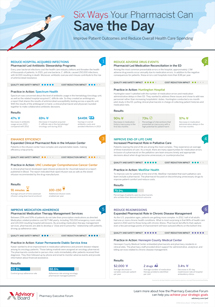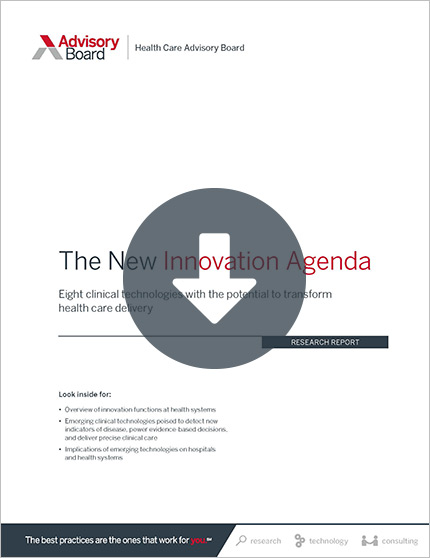Auto logout in seconds.
Continue LogoutThe United States Preventive Services Task Force (USPSTF) in a draft statement issued Tuesday for the first time recommended that health care providers offer pre-exposure prophylaxis (PrEP) with antiretroviral therapy to patients at high risk for HIV infection.
Here are 8 clinical technologies that could transform health care delivery
More than one million U.S. residents are living with HIV. Every year, an estimated 40,000 new U.S. residents are infected with HIV. About 1.2 million U.S. residents are eligible for PrEP, which research has shown is more than 90% effective at preventing HIV infection when taken daily. However, only about 78,360 U.S. residents took PrEP in 2016.
USPSTF says evidence shows PrEP reduces risk of HIV infection
USPSTF said the draft recommendation is based on evidence showing PrEP decreases an individual's risk of contracting HIV. USPSTF reviewed data from 12 randomized clinical trials comparing PrEP with a placebo or no PrEP. Each of the clinical trials evaluated a risk-prediction tool designed to identify patients at high risk for HIV infection.
A meta-analysis of the clinical trials found PrEP is associated with a reduced risk of HIV infection when compared with a placebo or no PrEP after patients took PrEP for four months to four years, according to USPSTF. The task force said the evidence shows the drug's effectiveness is correlated with a patient's adherence to the drug's daily regimen.
In addition, USPSTF said evidence shows the use of an antiretroviral therapy reduces the risk of transmitting HIV to an uninfected individual, and early detection of an HIV infection reduces the risk of an AIDS-related death.
However, USPSTF found inadequate evidence to support the use of specific risk-assessment tools to identify patients at high risk for HIV infection. In addition, USPSTF said evidence shows PrEP can potentially cause renal and gastrointestinal adverse effects, as well as preterm births in pregnant women.
USPSTF recommends PrEP for patients at risk for HIV infection
USPSTF in the draft statement recommended providers offer PrEP with antiretroviral therapy to all men and women who are at high risk for HIV infection because of their drug use, sexual behavior, or sex partners.
USPSTF said the overall risks associated with using PrEP are minimal. As such, USPSTF in the draft statement gave an "A" grade recommendation for providers to offer PrEP with antiretroviral therapy to all men and women who are at high risk for HIV infection. In a separate draft statement, USPSTF gave an "A" grade recommendation for providers to:
- Screen all individuals ages 15 to 65, including all pregnant women, for HIV infection; and
- Screen individuals at risk for HIV infection who are younger than 15 and older than 65.
Under the Affordable Care Act, insurers are required to cover preventive services that receive a "B" grade or higher from USPSTF without cost sharing. If USPSTF finalizes the draft recommendation, patient access to PrEP—which costs $20,000 annually—could significantly expand.
CDC is accepting public comments on the draft recommendations until Dec. 26.
Comments
Seth Landefeld, a member of USPSTF, said, "The evidence is clear: when taken as prescribed, PrEP is highly effective at preventing HIV. To make a difference in the lives of people at high risk for HIV, clinicians need to identify patients who would benefit and offer them PrEP."
Aaron Lord—a physician at New York University School of Medicine who co-founded the PrEP4All Collaboration, which seeks to expand PrEP access to all U.S. residents—said, "This is definitely fantastic news and validates everything science has been saying all along." He continued, "We've known this is a very effective medication for quite a while, and feel we could be a lot further along in using it to reduce infections. The potential is absolutely tremendous. When taken daily, there's very good evidence that the chance of acquiring HIV is essentially zero."
Kenneth Mayer, co-chair and medical research director at the Fenway Institute, said, "This is big news. There is no cure for H.I.V., and there is no vaccine, but we have these medications that can have an effect on the epidemic. The data are very clear that PrEP works if you take it" (Caryn Rabin, New York Times, 11/20; Baker, "Vitals," Axios, 11/21; Walker, MedPage Today, 11/20).
Here are 8 clinical technologies that could transform health care delivery
Our new report explores the clinical technology pipeline to help health care leaders become more conversant in the major vectors of innovation, leading applications of new technologies, and the business implications for established providers. Read on to unpack the new innovation agenda.
Don't miss out on the latest Advisory Board insights
Create your free account to access 1 resource, including the latest research and webinars.
Want access without creating an account?
You have 1 free members-only resource remaining this month.
1 free members-only resources remaining
1 free members-only resources remaining
You've reached your limit of free insights
Become a member to access all of Advisory Board's resources, events, and experts
Never miss out on the latest innovative health care content tailored to you.
Benefits include:
You've reached your limit of free insights
Become a member to access all of Advisory Board's resources, events, and experts
Never miss out on the latest innovative health care content tailored to you.
Benefits include:
This content is available through your Curated Research partnership with Advisory Board. Click on ‘view this resource’ to read the full piece
Email ask@advisory.com to learn more
Click on ‘Become a Member’ to learn about the benefits of a Full-Access partnership with Advisory Board
Never miss out on the latest innovative health care content tailored to you.
Benefits Include:
This is for members only. Learn more.
Click on ‘Become a Member’ to learn about the benefits of a Full-Access partnership with Advisory Board
Never miss out on the latest innovative health care content tailored to you.


